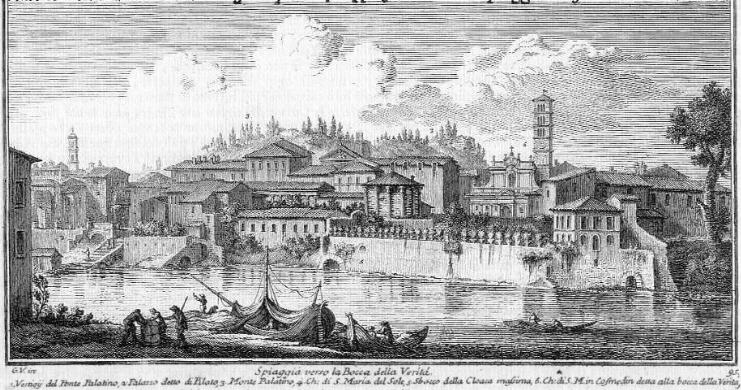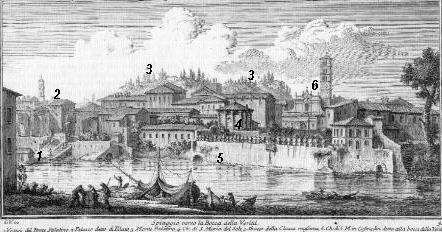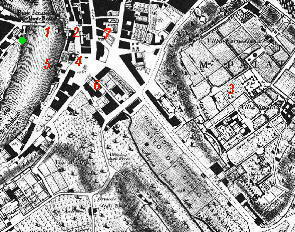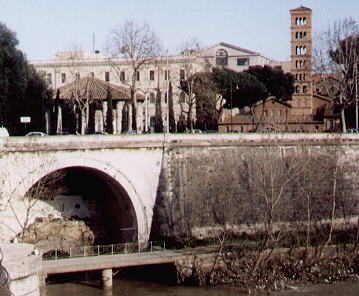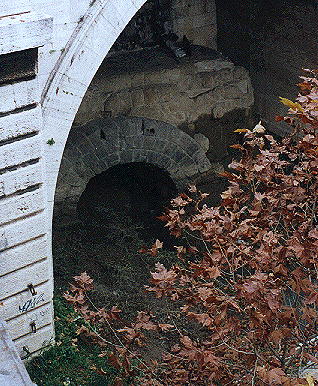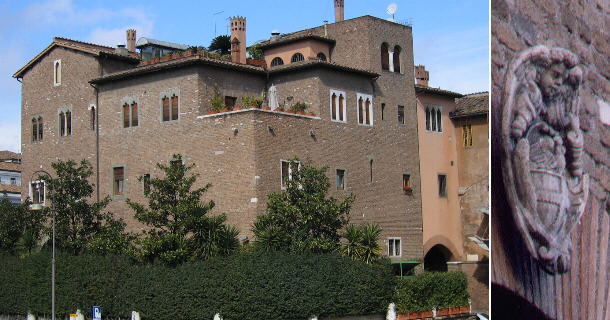  Spiaggia verso la Bocca della Verità (Book 5) (Map C3) (Day 5) (View C10) (Rione Ripa) In this page:
The plate is mainly a view of Monte Palatino. The view is taken from the green dot in the small 1748 map here below.
In the description below the plate Vasi made reference to: 1) Ruins of Ponte Palatino;
2) Casa di Pilato; 3) Monte Palatino; 4) S.
Maria del Sole; 5) Cloaca Masima; 6) S.
Maria in Cosmedin. The small map shows also 7) Casa dei Pierleoni.
2), 3), 4) and 6) are shown in detail in other pages.
The view is quite different due to the quaying of the river shores. The limited evidence of Ponte Palatino shown in the plate is no longer visible.
It is one of the earliest application of the arch in Rome and dates back to 200 BC. Rome was originally built over the seven hills and the low grounds were marshy. When the expansion of Rome led to developing these areas (like the Forum between Capitol and Palatinus) the problem of draining the water was tackled by canalizing a small occasional stream between Palatinus and Aventinus and forcing there the waters of all the low grounds of the city. The mill which made use of the sewer stream is still visible near S. Giorgio al Velabro.
The architect and archaeologist Antonio Munoz (1884-1960) played a great role in the design of the "imperial" perspectives which in the 1930s isolated some of the most imposing monuments of Ancient Rome. He supervised the opening of Via del Mare which led to the loss of Piazza Montanara and Ospizio di S. Galla and to the redesign of the area near S. Maria in Cosmedin. He set his residence in a medieval house which had belonged to the Pierleoni, next to S. Giovanni Decollato: the house was actually pulled down and rebuilt, but the small windows come from the old building. Although Munoz disliked Baroque art, his coat of arms was framed in a very Baroque way. The small church of S. Aniano was located near this house. This Vth century French saint (Saint Agnan of Orleans) was the patron of the cobblers to whom the church belonged. Next plate in Book 5: Monte Aventino e Vestigi del Ponte
Sublicio
Go
to |
All images © 1999 - 2003 by Roberto Piperno. Write to romapip@quipo.it
